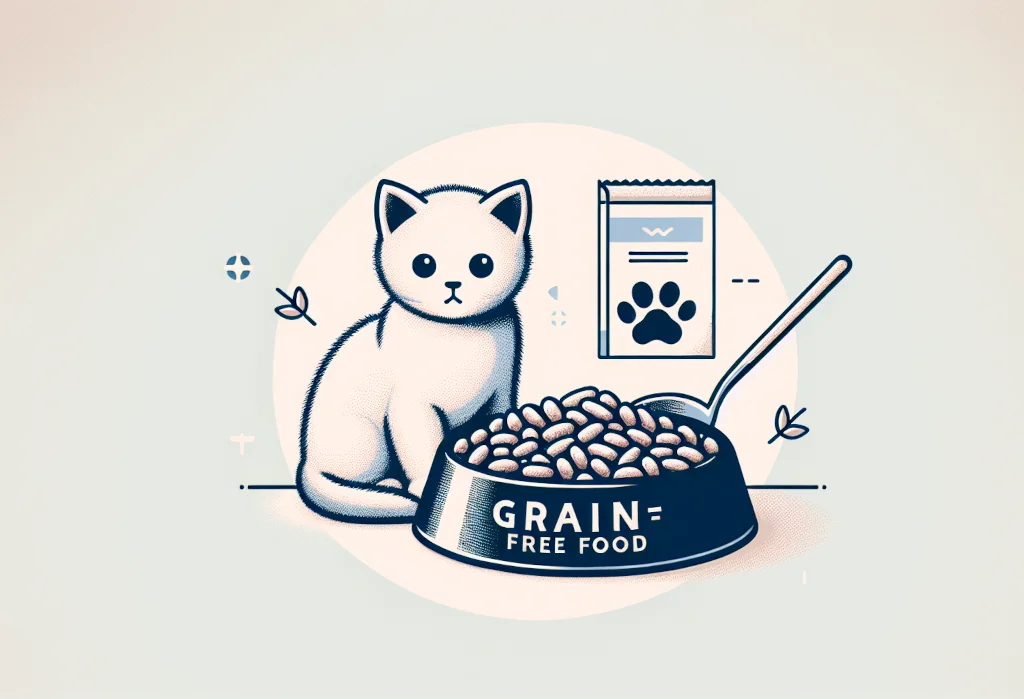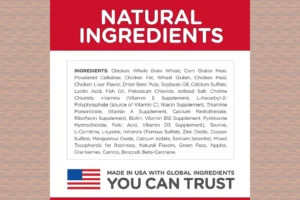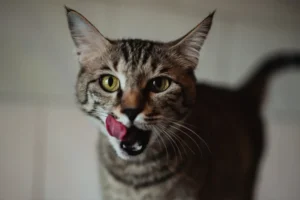Disclosure: We may earn a commission from helpful, relevant links in our content. No cost to you. See our privacy policy.
When it comes to feeding our feline friends, deciphering the menu can feel like hacking a hairball. Grain-free kitten food? Sure, but which bag or can do I whisk off the shelf?
Let’s cut through the cluttered world of cat nutrition together. By the end of this blog post, you’ll have a laser pointer’s focus on how to choose the best grain-free food for your tiny tiger.
Key takeaways:
- Choose grain-free kitten food with high-quality protein, like real chicken or fish, as the first ingredient for optimal growth.
- Ensure the food includes essential nutrients such as Omega-3 and Omega-6, taurine, vitamins, minerals, and probiotics for overall health.
- Transition your kitten gradually to avoid digestive upset and consult a vet for personalized advice and to address any dietary concerns.
Why Go Grain-Free?
Kittens, by their very nature, are little carnivores who thrive on a diet rich in animal protein. So, why opt for grain-free kitten food? It boils down to their digestive system, which is finely tuned to break down meats rather than grains. Some kittens might develop allergies or sensitivities to grains, manifesting as itchy skin or gastrointestinal distress. Plus, a grain-free diet can mirror the natural, high-protein feast of their wild ancestors, potentially leading to better health and more robust digestion.
What Should You Look for in Grain-Free Kitten Food?
Choosing the best grain-free food for your kitten isn’t about just avoiding grains. The focus should be on high-quality protein sources—think real chicken, turkey, or fish as the first ingredient. But protein isn’t the whole picture. Here are the essentials:
-
High-Quality Protein : Aim for a formula where meat is the first ingredient, ensuring that your kitten is getting the protein it needs for growth and development. For example, BLUE Wilderness High Protein Grain Free Kitten Dry Cat Food is known for having real chicken as its first ingredient.
-
Fatty Acids : Essential fatty acids, like Omega-3 and Omega-6, support healthy skin and coat. These can come from fish oils or flaxseed.
-
Taurine : An amino acid that’s crucial for heart and eye health. Grain-free doesn’t mean taurine-free, so check the label.
-
Vitamins and Minerals : These support overall health, so look for a mix that includes vitamins A, D, and E, as well as essential minerals.
-
Probiotics : For maintaining proper digestive health, some grain-free foods add probiotics to support gut flora.
How Do You Transition Your Kitten to Grain-Free Food?
Switching your kitten to a new diet needs to be done with a gentle hand to avoid any tummy troubles. Here’s how to smooth the transition:
-
Start Small : Mix a little grain-free food with their current diet. Over the next 7-10 days, gradually increase the amount of new food while decreasing the old food.
-
Stay Patient : Some kittens might be more finicky than others. It’s all about patience. If they’re particularly hesitant, try slightly warming the food or adding a bit of wet food to make it more appealing.
-
Monitor : Keep an eye on your kitten’s digestion and stool. A little softness at first is normal, but if issues persist, chat with your vet. They might need a slower switch or a different grain-free formula.
-
Hydration is Key : Grain-free diets are often richer, so ensure your fluffy friend has constant access to fresh water to support their digestion.
Remember, transitioning to a grain-free diet isn’t an overnight endeavor. It’s about tuning into your kitten’s needs and adjusting accordingly. Your patience will pay off with a happier, healthier little carnivore at your side.
What Are the Popular and Highly Rated Grain-Free Foods for Kittens?
When embarking on the quest for the ideal grain-free diet for your kitten, you’ll find the market bustling with options. However, not all grain-free foods are created equal. Here are some cream-of-the-crop choices that have garnered accolades and trust from kitten owners and experts alike:
-
Blue Buffalo Wilderness Kitten Chicken Recipe : This high-protein, grain-free option is packed with real chicken, sweet potatoes, and other wholesome ingredients designed to support your kitten’s growth and development.
-
Wellness CORE Natural Grain-Free Turkey & Chicken Liver Pate : A smooth, easy-to-eat option for even the pickiest of palates, this pate is rich in premium animal protein and essential nutrients.
-
Instinct Original Kitten Grain-Free Recipe with Real Chicken : Made with cage-free chicken as the first ingredient, this recipe is tailored to meet the unique needs of kittens, providing natural DHA for brain and eye development.
Unique Insight: One often overlooked aspect when choosing grain-free kitten food is the importance of rotational feeding. This practice involves varying your kitten’s diet among different protein sources and formulas to provide a broader spectrum of nutrients and reduce the risk of food sensitivities. This approach ensures your kitten doesn’t miss out on any critical nutrients that might be more abundant in one food type over another.
Common Myths About Grain-Free Cat Food
Now, let’s tackle some whisker-twisting myths about grain-free cat food to ensure you’re making the most informed decisions for your fluffy bundle of joy.
Myth 1: Grain-Free Means Carb-Free
It’s easy to fall for this one, but the truth is, grain-free doesn’t always mean a product is low in carbohydrates. Many grain-free foods substitute grains with other carb sources like potatoes or peas. The key is to look for foods where high-quality protein sources dominate the ingredient list.
Myth 2: Grain-Free Is Always Healthier
Not necessarily. While grain-free options can be an excellent choice for kittens with specific grain allergies or sensitivities, they aren’t inherently superior. The overall nutrient profile, ingredient quality, and appropriateness for your kitten’s life stage are what truly matter.
Myth 3: Grain-Free Diets Cause Heart Problems
This is a contentious one. Some studies have suggested a link between grain-free diets and dilated cardiomyopathy (DCM) in dogs, but evidence in cats remains sparse and inconclusive. The lesson here? Always consult with your vet about your kitten’s diet, especially if you have concerns about health issues like DCM.
Factual Highlight: Despite these myths, the truth is that a well-chosen grain-free diet can be a wonderful option for your kitten, provided it’s balanced, nutritionally complete, and suits their individual needs and sensitivities. Always look beyond buzzwords and marketing claims, focusing instead on the nutritional value and quality of ingredients.
Choosing the best grain-free food for your kitten requires a bit of detective work, a dash of myth-busting, and a whole lot of love. By focusing on quality ingredients, considering unique approaches like rotational feeding, and staying informed about common misconceptions, you’ll be well on your way to ensuring your kitten grows up healthy, happy, and energetically curious about the world. Remember, when in doubt, a vet’s insight can be invaluable in tailoring your kitten’s diet to their specific needs. After all, a well-fed kitten is a purr-fect companion.
Alex, a passionate animal lover, has experience in training and understanding animal behavior. As a proud pet parent to two dogs and three cats, he founded AnimalReport.net to share insights from animal experts and expand his knowledge of the animal kingdom.





